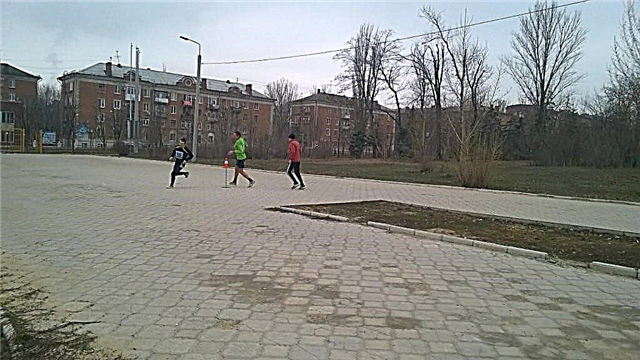Barrier running is a unique discipline where the decisive role is played not by the endurance and strength of the athlete, but by his ability to coordinate, and the ability to maintain speed at the moment of overcoming an obstacle. This exercise is rarely used in conjunction with a workout routine, such as to lose weight or improve fitness. Most often, jogging through obstacles is practiced by professional athletes who need to increase speed indicators, as well as a sense of coordination and rhythm.
Features and rules of the barrier sprint
This discipline is very traumatic, so it should not be practiced without a clear understanding of the technique.
- According to the world rules, hurdles are never more than 400 meters.
- In winter, races of no more than 60 meters are most often arranged;
- A construction resembling the letter L acts as a barrier. The anatomy of such an obstacle assumes the least trauma to the sprinter during a rollover.
- The rules of hurdling competition do not prohibit dropping an obstacle, because the athlete will lose speed. However, deliberately knocking down the barrier is fraught with disciplinary punishment.
- The correct technique for running with hurdles involves, namely, stepping over the structure, and not carrying the limb from the side;
- You can not go outside of your treadmill;
- The shorter the distance, the greater the height of the obstacles (from 0.76 m to 1.06 m);
- The barriers are installed at equal intervals from each other;

Distances
World rules set specific distances, while the types of hurdles depend on the time of year and the venue of the competition (stadium or open arena)
- In summer, 110 and 400 meters for men;
- In summer, 100 and 400 meters for women;
- In winter, 50 and 60 meters for men and women.

Execution technique
Consider the step-by-step hurdling technique:
- Immediately after a low start, the sprinter must reach the highest speed;
- After about 5 steps, it is time to prepare for the first obstacle. 2 meters before the barrier, it is necessary to start the extension of the swing limb;
- During the push, the athlete should move forward as much as possible, trying to step over the barrier with the swing leg. For this it is important to have excellent stretching;
- At the moment of the so-called "attack", the thigh of the swing leg becomes parallel to the floor.
- Further, there is a separation of the pushing limb and its transfer through the structure;
- The flight leg simultaneously reaches the floor on the other side of the barrier;
- The foot should be put on the toe, rolling it onto the heel, the body is kept straight, without bending forward or backward;
- Then high speed develops again;
- A new "attack" begins 2 meters before the next barrier.
- They finish in the hurdle race in the same way as in any other sprint distance - after the final obstacle, they develop high speed and cross the finish line.
How to prepare well
Jogging develops jumping ability, increases endurance, trains coordination and speed. The exercise requires high-quality preparation, because an ordinary sprinter is unlikely to be able to immediately get a high result at the barrier distance, which cannot be said about the opposite situation.
- Get ready for long workouts and thorough training of the elements of the basics of hurdling;
- Devote most of the lessons to increasing strength and speed abilities;
- Work separately to improve endurance and flexibility;
- Don't forget about the stretching complex;
- To overcome barriers, it is important to develop a steady sense of rhythm, which comes only as a result of long and hard training.

How to improve your performance and what points are important to train to effectively overcome barriers in hurdles?
- Train the technique of stepping over the barrier structure regularly;
- Strive for minimal waste of time and no touch;
- Strive for the perfect technique for approaching the obstacle;
- Select and bring to automatism the choice of the push position and the casting of the swing leg;
- Control the correct position of the torso, because even the slightest deviation from the recommended technique leads to the loss of precious milliseconds.

Benefits, harms and contraindications
So, we discussed the rules of running with obstacles and analyzed the technique of performing the exercise. Next, let's find out why such training is useful and whether it is worth practicing for people far from professional competition:
- Barrier running improves an athlete's endurance. This indicator is important in many sports, for example, in swimming, weightlifting, various martial arts, etc .;
- The athlete's ability to coordinate increases;
- Speed qualities are developing;
- The articular and muscular apparatus is strengthened;
- The cardiovascular and respiratory systems are strengthened;
- The supply of oxygen to the body improves.
And this is just one thousandth of information about the benefits of running for women.

Of course, hurdling has contraindications, including injuries to the joints and ligaments in the first place. Running is contraindicated for people with cardiovascular diseases, with varicose veins, glaucoma, after abdominal surgery, heart attacks and strokes. The disciplines of athletics are prohibited in states incompatible with any physical activity, since they require colossal work from all vital systems.
An athlete can harm himself only if he exercises in the presence of inhibitory factors. Also, with insufficient mastery of the technique, the risk of injury increases, therefore we recommend training under the supervision of an experienced trainer.
We wish you victory in sports and in the ring of life!









